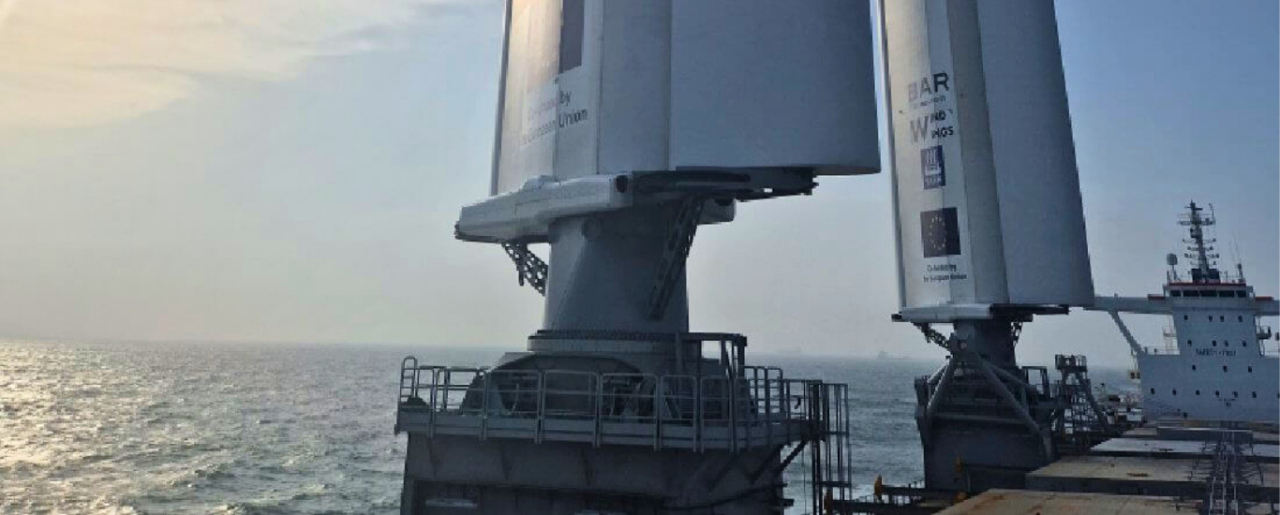
The Baltic Exchange highlights the potential of wind-assisted ship propulsion (WASP) to reduce emissions and fuel costs on major shipping routes
Understanding Wind-Assisted Ship Propulsion
The Baltic Exchange would like to increase industry awareness of the positive contribution wind assisted ship propulsion (WASP) could provide in reducing emissions and fuel cost for major shipping routes.
The savings shown here should be treated as initial guidance only. Different WASP technologies may generate notably different savings on specific routes. Technology providers can offer accurate performance predictions specific to their systems. Their contact details are listed in the “Criteria and Inputs” section.
The results for each of the standard routes covered by the Baltic Exchange are presented in a traffic light format for the estimated fuel and emissions savings. These are based on the standard Baltic ship, speeds, and fuel consumptions on identified Baltic trade routes.
Outcome (Traffic Light) — Estimated Savings for Wind Propulsion
The following table shows average savings on representative Cape routes for the WASP technologies considered. Other Baltic time-charter routes are expected to exhibit similar fuel savings per day, as they are composites of these representative routes.
The validated data and simulations in this study are kindly provided by members of the International Wind Ship Association (IWSA). The savings shown here should be treated as initial guidance. Wind route optimisation, which is not included in these results, will deliver additional fuel and emissions savings.
Different WASP technologies may generate notably different savings on specific routes. Technology providers can offer accurate performance predictions specific to their systems. Their contact details are listed in the “Criteria and Inputs” section.
When trading to EU ports, WASP also offers the benefit of reducing compliance costs under the EU ETS and FuelEU regulations. Under FuelEU, in particular, significant “wind reward factors” may be obtained. These effectively eliminate the compliance cost of the FuelEU penalty in the near term. This regulation therefore supports a quicker return on investment for vessel trading to the EU/ EEA.
Cape size route inputs:
| Route | Ballast Port | Load Port | Discharge Port | Total Mileage | Wind potential - region assessed |
| C2 | Rotterdam | Tubarao | Rotterdam | 5,003 | Atlantic - North South, cross Equator |
| C3 | Qingdao | Tubarao | Qingdao | 11,339 | South Atlantic, Indian Ocean to China |
| C5 | Qingdao | Port Hedland | Qingdao | 3,612 | West Australia - China |
| C7 | Rotterdam | Bolivar | Rotterdam | 4,376 | Northern Hemisphere Cross Atlantic |
| C17 | Qingdao | Saldanha Bay | Qingdao | 8,251 | Indian Ocean/ South Africa to China |
Reference Ship
Age: 5–10 years (max)
Type: Cape size, not optimised for wind at newbuild
Deadweight: 180,000 DWT
Features: Non-scrubber fitted, no ESD or rudder optimisation
LOA: 290m, Beam: 45m, TPC: 121
Capacity: 198,000 cbm grain
Draft: Scantling draft in laden condition
Baltic Standard Speeds & Consumptions
Full speed: 14 knots laden / 15 knots ballast → 62 mt VLSFO/day
Eco speed: 12 knots laden / 13 knots ballast → 43 mt VLSFO/day
No diesel assumed at sea except where required for WASP operation.
Data Partners
The simulation and validated data for this resource have been kindly provided by the following International Windship Association (IWSA) members:
Anemoi – https://anemoimarine.com/
WindWings® from BAR Technologies – https://www.bartechnologies.uk/commercial-ships/windwings/
Contact
For questions, feedback, or additional information, please contact: emissions@balticexchange.com.